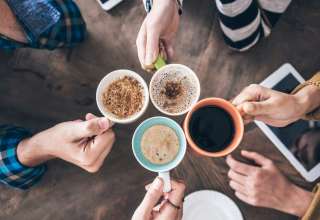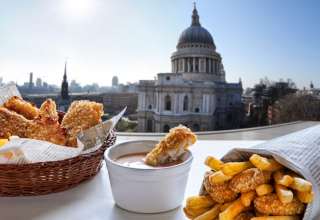From its legendary origins in ancient China to its starring role in social rituals across the globe, tea is so much more than just another drink
Tea is one of the most popular drinks in the world, with an estimated 2.5 to 3 billion cups consumed every day. Common tea types include black, green, white, herbal, spiced or flavoured, and there are also many ways of preparing, serving and drinking this ubiquitous infusion. Read on to find out the history of tea, its popularity, brewing methods and fascinating tea traditions around the world.
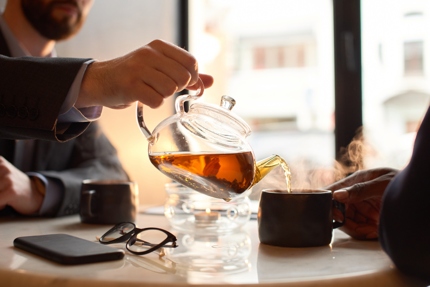
History of tea
According to many historians, tea was known to be consumed in China some 4,800 years ago. It then became a daily drink in the 3rd century during the Three Kingdoms period when China was divided into the states of Wei, Shu and Wu. That era was marked with chaos, but its many war stories, along with heroes and villains, went on to inspire many art forms, including the celebrated novel Shanguozhi Yanyi (Romance of the Three Kingdoms). Intriguingly, it was against this turbulent backdrop that the tea-drinking habit took hold and became deeply ingrained in the Chinese culture.
The popularity of tea then spread to neighbouring Japan and Korea. It was thought that Korea’s ambassador to China brought tea back and presented it to Queen Seondeok sometime during her reign (632-647), while records show that the Buddhist monks in Japan had already incorporated tea into their ceremonies by the 8th century.

But it would take another few hundred years for tea to reach Europe – first introduced by Dutch traders in the early 1600s, then popularised in England by Catherine of Braganza in 1662, daughter of Portugal’s King John IV and wife of England’s King Charles II. When Catherine and her dowry arrived in England, Portugal had occupied Macau for over a hundred years. Naturally, many Portuguese noble families were familiar with oriental spices and herbal remedies, including tea. England, on the other hand, had no direct trade with China at that time and knew little about the brew. The new queen soon found herself regarded as a trendsetter when ladies in the royal court started to copy her tea experience – infusing tea leaves with hot water before serving the beverage in tiny porcelain teacups and saucers, all very posh and with an air of regal pomp.
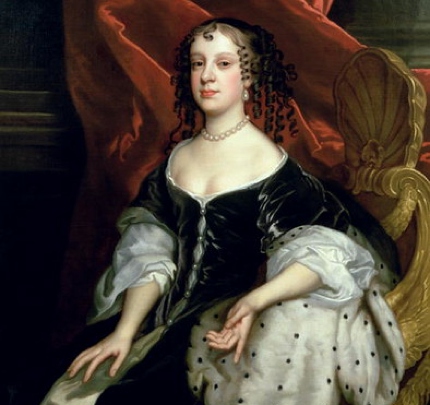
By the 18th century, tea had become the drink of choice for many in England and Wales, but its high taxes also meant that not everyone could afford it. Inevitably, this form of unbalanced trade soon had the attention of smugglers. In 1784, Prime Minister William Pitt the Younger suggested that of the 13 million pounds (weight) of tea consumed in Britain, only 5.5 million were brought in legally, according to a BBC article. In response, William Pitt slashed the tea tax from 119% to 12.5% and stopped the smuggling trade overnight.
Around the same time, the British also began to experiment with cultivating Chinese tea saplings in India but their effort had little success. Instead they found the climate in India was suitable for growing poppy. They farmed the crop extensively, mostly in present-day Uttar Pradesh and Bihar, and used the seedpods to produce opium and traded it for tea with China.
In 1823, a nobleman from Assam named Maniram Dewan shared the local tea with his British friends. At first, the Brits didn’t think much of the Assam variety, but when the East India Company lost its trade monopoly with China in 1833, the Brits were forced to act fast and soon found themselves setting up tea plantations in Assam’s Brahmaputra valley. Slowly but steadily, the cultivation projects were expanded to Darjeeling and also Sri Lanka (known as Ceylon back then).

Top tea-consuming countries
This may surprise you, but leading tea producers like China and India aren’t in the top ten of tea-consuming nations. According to WorldAtlas.com, Turkey is the most tea-loving country in the world, consuming a whopping 3.16kg of tea per capita in 2016.
Ireland is in second place, consuming 2.19kg per capita, followed by the UK at 1.94kg per capita.
Other countries that round up the top ten are Iran, Russia, Morocco, New Zealand, Egypt, Poland and Japan.
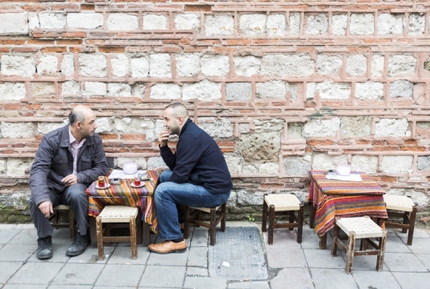
Popular tea types
All teas, apart from herbal, come from the camellia sinensis plant and it is the production process that gives each type of tea its distinct characteristics. In other words, from the same plant, you can get black, white, green or oolong tea depending on what you pick (buds or leaves) and how you process your harvest.
White tea
Delicate and minimally processed, white tea is produced from the unopened buds of the plant. When the young buds are collected, they are still covered in fine white hairs, hence the name “white” tea. Once harvested, the buds are quickly dried to produce a mild-tasting tea with low caffeine content and high levels of antioxidants.
A good recommendation is English Tea Shop’s organic white tea available on Amazon.
Black tea
The most common tea type, black tea accounts for nearly 85% of tea consumption in the western world. To make black tea, you pick tea leaves, bruise them and leave them to oxidise fully – allowing oxygen to interact with the cell walls and darken the colour – before heat-treating and drying the leaves. As a result, you get a stronger-flavoured drink with a higher caffeine content compared to most other teas.
Most black teas available on the market today are actually a blend of different grades of black tea grown in several countries, from popular producers like China and India to the more obscure ones like Argentina and Malawi. Each manufacturer also follows a distinct set of guidelines – considering factors like colour, body and overall liveliness of the tea on a palate – to create a blend that appeals to their customers.
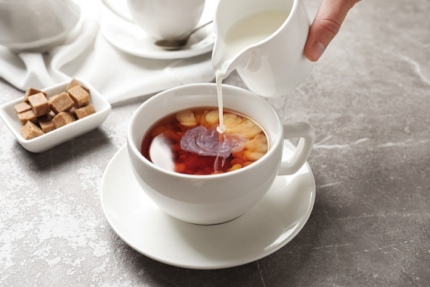
Green tea
Green tea is typically pale green or warm yellow in colour, and this is due to the production process where the tea leaves aren’t allowed to oxidise fully. Once the leaves are picked, they are quickly steamed or pan-fried to prevent oxidation from altering their delicate flavour. Green tea is known for its health benefits, boasting a high level of antioxidants, while some studies also show that it may boost metabolic rate and brain function.
Gunpowder green tea is one of the most popular varieties, and the term refers to withered and steamed tea leaves that have been rolled into tight pellets that resemble old-fashioned gunpowder for cannons. The pellets are then dried to create a smoky profile. Almost all gunpowder green teas are produced in China, most notably Zhejiang Province.
Chiswick Tea sells potent Gunpowder premium loose leaf green tea, a brand that we like.
Oolong tea
The production of oolong reflects the style of the tea master. First, they must decide if the leaves should be oxidised minimally, partially or fully, then they must shape the leaves, usually by rolling and curling them into tight balls. Then comes the roasting process – some tea masters would skip this part while others would proceed to roast and transform the flavour. Tie Guan Yin (Iron Goddess) is a popular variety of oolong that has been heavily oxidised and roasted, while Gao Shan (High Mountain) sits on the opposite spectrum – minimally oxidised and unroasted.
Pu-erh tea
In ancient China, pu-erh is made from the wild camellia sinensis plant grown in Yunnan, China, but nowadays it is harvested from managed plantations. To make pu-erh, tea masters would press the oxidised leaves into cakes and leave them to age, allowing mother nature to help develop the distinct ‘earthy’ flavour that pu-erh is famously known for.
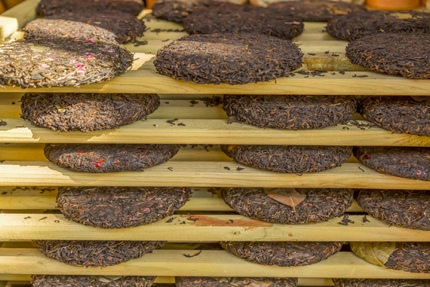
Flavoured or spiced tea
Earl Grey, jasmine, rose and chai are all flavoured or spiced tea, made from a base of either black or green tea with added oil, flavouring or spices. For instance, jasmine tea is usually a blend of green tea with sweet-smelling flowers, while chai is a heady mixture of black tea, clove, cinnamon and cardamom.
Herbal ‘tea’
Herbal tea doesn’t contain buds or leaves picked from the camellia sinensis plant, but is made entirely of caffeine-free ingredients like seeds, leaves, roots, tree barks, fruits and flowers. Examples range from the common (chamomile, peppermint, rooibos) to the unusual (hemp, butterfly-pea flower). Global sales of herbal tea are strong – and estimated to get stronger – as wellness-conscious consumers are keen to embrace the health benefits of different types of infusion.
If you’re looking for something that promotes healthy sleep, check out Clipper organic sleep easy infusion, which contains cinnamon, chamomile, valerian and other natural herbs enhanced with natural orange flavouring.
How to brew tea
Black tea – most industrial teabag manufacturers recommend using freshly boiled water to make tea, which is about 95°C (203deg;F). But when using tea leaves or higher-grade black tea, the ideal temperature should be 90°C (194°F) if you intend to add fresh milk during the brewing process or 80°C (176°F) if you prefer to drink it black.
While everyone has a preferred infusion time, most black teas tend to taste bitter when you steep them for too long.
Green tea – for single tea bags, the ideal temperature is 80°C (176°F), and after 20-30 seconds, shake the teabag in hot water a few times before discarding it. If you are using loose leaves, then a lower temperature works best.
White tea – this delicate tea should be infused in temperate around 70°C (158°F). Any higher temperature is likely to burn the tea and prevent it from releasing its maximum flavours. The infusion time could be anything from 20 seconds to two minutes, depending on your preference.
Flavoured and herbal – the recommended temperature is usually 80-90°C (176-194°F), but the infusion time is totally up to you.
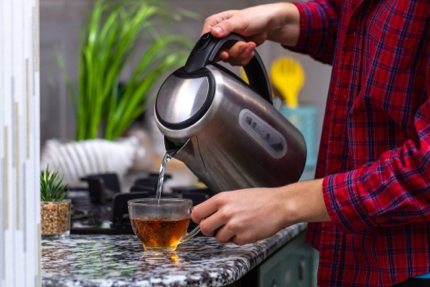
Tea traditions around the world
Most cultures have a unique relationship to tea, and it is only natural that they have their own way of making tea too.
Tibet
In chilly, high-altitude Tibet, tea is fortified with generous helpings of milk, salt and yak butter. Known as po cha locally, the process is to infuse black tea with salt and milk first, then you pour the tea mixture, along with a generous amount of yak butter, into a chandong (a cylinder churning device made of wood). After churning the liquid with a stick for a few minutes, you reheat the mixture gently before serving the hot beverage in tiny cups.
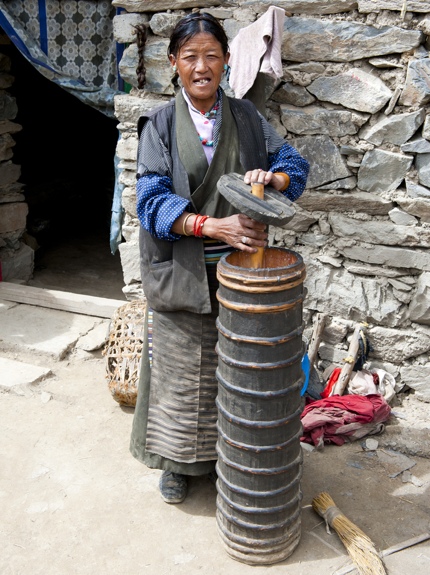
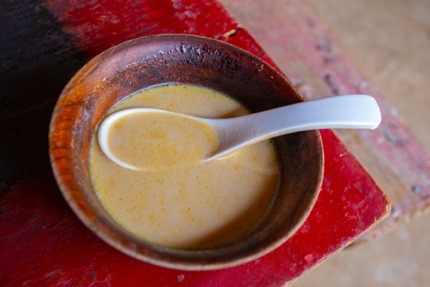
Morocco
Moroccan mint tea, aka Maghrebi, Touareg or Sahrawi tea, depending on which region of Morocco you’re in, is a delicious blend of green tea, fresh mint and sugar. As Moroccans like their tea strong, they tend to use gunpowder green tea as the base.

India
India is most famous for its chai blend – black tea mixed with aromatic spices like cloves, cinnamon and cardamom, along with milk and sugar. Every chai wallah (tea seller) has his own recipe and some may add freshly pound ginger or a grating of fresh nutmeg in the tea mixture. In the past, chai would be served in small clay pots known as kulhar, but nowadays plastic cups or small glasses are more commonly used than kulhar.
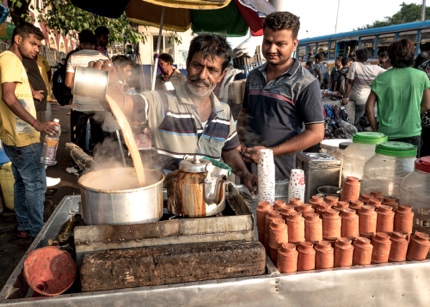
Russia
Russians love their tea so much that they created samovar, a metal container with a nozzle at its base and an attached teapot (filled with zavarka or tea concentrate) at the top. Inside the container, vertical tubes containing burning charcoal are used to keep the water hot. When you’re ready for a cuppa, you pour the tea concentrate into a cup and top it up with hot water from the samovar. Although a Russian creation, samovar is also widely used in Turkey, Iran, and parts of India. Russians also like to have their tea with milk, sugar, and a cookie.
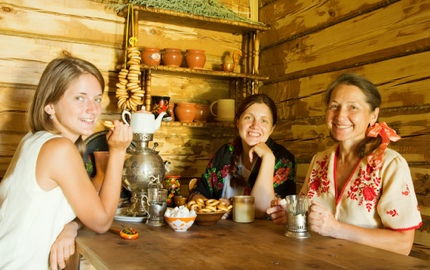
Japan
Japan is the ultimate destination for those who love a fascinating tea ceremony which is also an artistic expression of zen. Green tea is the de facto drink in every teahouse, but every host has a slightly different method of preparing and serving the beverage. Most tourists tend to attend either a chanoyu (involving matcha, finely ground green tea) or senchado (involving loose tea leaves), while the formal chaji ceremony is best reserved for the hardcore enthusiasts.

Britain
Committed tea drinkers, the British introduced the ritual of afternoon tea in 1840, when the Duchess of Bedford would ask for a cup of tea and some dainty bread in the afternoon when she was peckish. Today, the affair is more elaborate – you get fancy scorns, cakes, pastries, and sandwiches, all arranged neatly on a three-tiered tea stand.
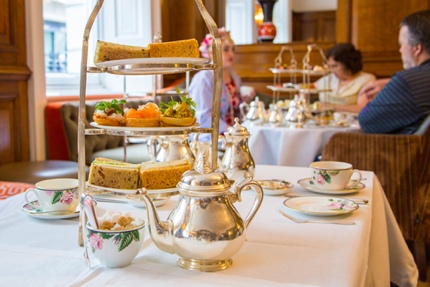
Are you going to put the kettle on and brew a cup of tea now?
Enjoy!





